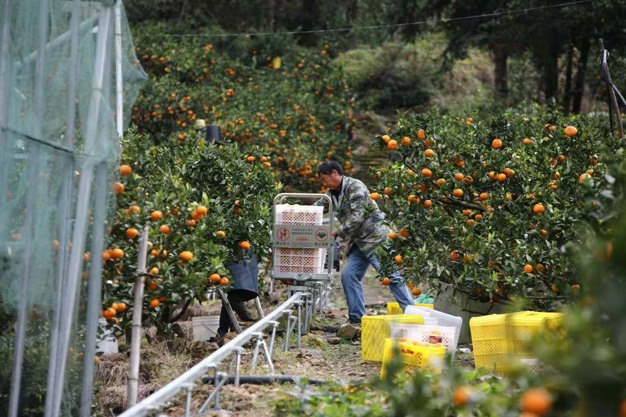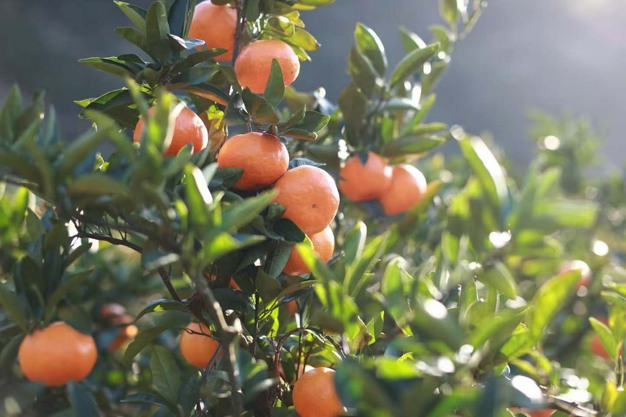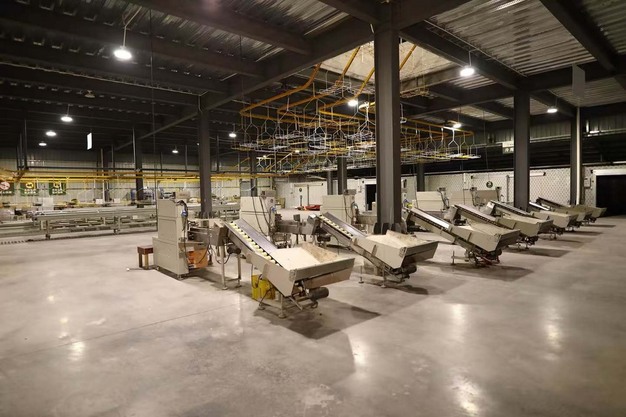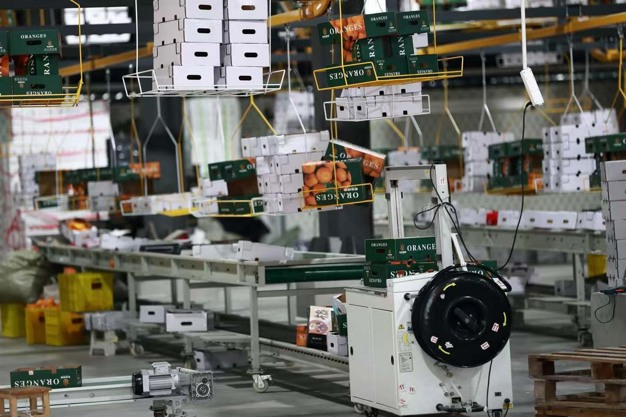Due to an off-year and the weather, the production of Linhai mandarin oranges produced in Taizhou, Zhejiang, China has decreased significantly this season. "Compared to last year's bumper harvest, production has dropped by nearly 50%, similar to the drop two years ago," said Mr. Feng from Taizhou Jiasheng Ecological Agriculture Co., Ltd. "Over the past four or five years, the alternating cycle of good and bad harvests has become more pronounced in many citrus-growing regions. In addition to the trees' nutritional factors, climate change is a key contributor."

"This year, the Taizhou production area experienced heavy rainfall during the flowering and fruit-setting stages, which affected fruit set and surface quality. Later, high temperatures and typhoons caused sunburn and cracking, further reducing yields. Fortunately, the weather improved toward the end of the season, which sped up the reduction of acidity in the tangerines. The highest Brix level has now reached around 13, and the taste is even better than last year."
"The decline in production has led to higher prices at the farm level, with large fruits fetching 30% more than in previous years. Smaller fruits, set to be harvested in November, are still awaiting price determination." Notably, local Linhai mandarin oranges, particularly the smaller and medium-sized ones, are more expensive due to their superior sweetness and flavor.

"Price increases are impacting market demand, and sales have slowed," Mr. Feng explained. "Our products are positioned in the mid-to-high-end market, which has faced challenges over the past two years. To adapt to market shifts, we developed orange juice drinks last year and this year introduced a more affordable brand to cater to varying market needs."

Feng elaborated that the main brand, "Donghaibaoju," continues to use high-quality local Linhai fruits, maintaining the original standards and positioning. The new brand, however, sources products from various regions across the country: "Mandarin oranges make up a large share of China's citrus production. Some areas enjoy favorable weather and low production costs, allowing for better-tasting and more cost-effective fruit. We've also made adjustments to packaging, specifications, and standards to reduce overall costs."
"We are managing this new product line as a brand and, to create differentiation, we are focusing not on fruit size but on the balance between acidity and sweetness."

Additionally, the level of mechanization in both orchards and factories has improved. "In the past two years, we've optimized drone management in the orchards and built a new factory. Along with continuing to use near-infrared technology for fruit sorting, we've added carton track conveyor belts to cut labor costs and maximize space efficiency. These innovations will help enhance our core competitiveness. We're continuously exploring new possibilities."










